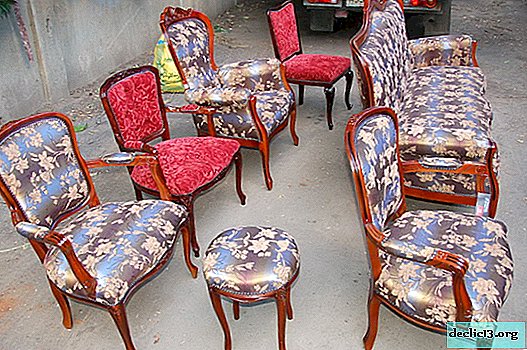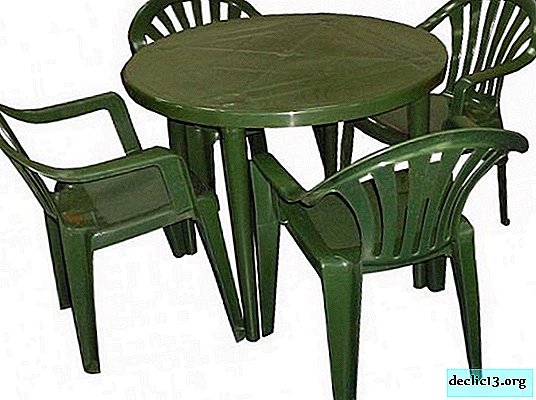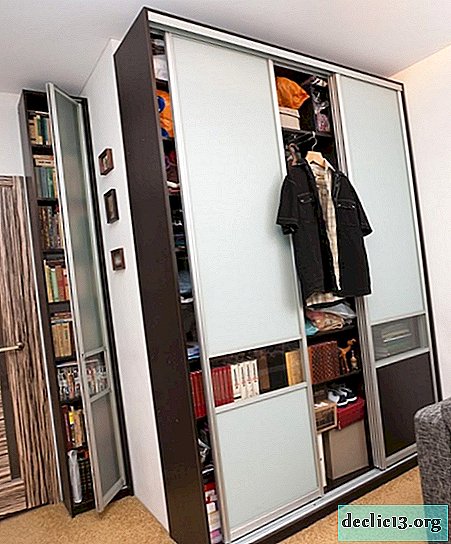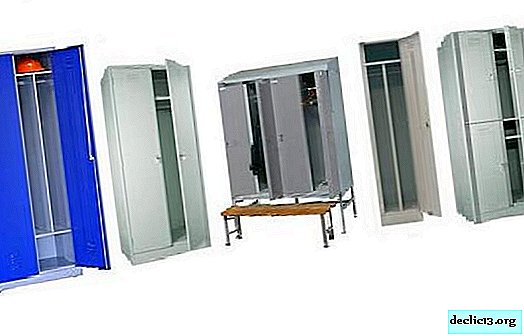How to clean the water heater from scale and plaque

The water in the water pipes is of poor quality. Contacting her, household appliances suffer, first of all - water heaters. On the heating element, during the operation period, scale is formed, and this leads to a malfunction. Failure to clean the equipment may result in damage. There are several ways to descale.
Why do I need to clean the water heater

It is necessary to clean the water heater when the following symptoms appear:
- Operation noise - scale at the bottom of the tank causes severe friction against the walls.
- Water has a yellowish tint and an unpleasant odor.
- When heated, a hissing sound is heard.
- Heating takes a long time.
- Increases energy consumption.
- The walls of the boiler body overheat. The temperature of nearby equipment, walls and sockets rises.
- Self shutdown.
The scale consists of salt and lime. Having low thermal conductivity, prevents the timely heating of water, which leads to unnecessary waste of electricity.
If no measures are taken, the scale will gradually settle in a thick layer on the parts of the device responsible for heat transfer. As a result, the protective relay is activated and the boiler is turned off. Over time, it may fail. To extend the service life, you need to clean the heater after 1-2 years after the start of operation. Preventive measures will avoid problems.
Preparatory stage
It is necessary to prepare:
- Disconnect the water heater from the power supply.
- Disconnect from the water supply by shutting off the cold water tap.
- Pour all water out of the boiler (a hose is connected to the drain fitting, through which fluid from the tank is drained).
- Remove the tank pan by unscrewing the fastening screws.
- Remove the control plate by disconnecting the electrical wires.
- Remove ten from the tank.
Depending on the model of the heater, the order of dismantling may be changed.
TIP! To assemble the device quickly, photograph each stage of disassembly.Mechanical cleaning method

When using hard water, ten and the inner surface of the tank are covered with a layer of limescale, which should be removed periodically.
You need to start descaling immediately after disconnecting while the coating is wet. You can use a wooden spatula, knife or wire brush. When the main dirt is removed, the residue can be cleaned with sandpaper. The durability of the boiler depends on the quality of cleaning.
Wipe the inside of the tank with a damp cloth. Do not use abrasive products, they may damage the coating.
OUT OF EXPERIENCE! Some do not remove the lime-salt coating from the walls of the tank, mistakenly believing that due to scale the metal is protected from corrosion, and serves as thermal insulation for hot water in the tank.At the end of cleaning, the boiler should be assembled and connected to the electric and water mains. The key to safety is dry wiring. Be careful before plugging in the appliance.
ATTENTION! Before using the boiler, check the tank for leaks. For this, a little water is poured, left for a day for control. If there are no leaks, you can use a water heater.Video recommendationsFolk remedies for cleaning ten and a tank
The scale from the PETN and the inner walls of the container can be removed using folk remedies. The following recipes are popular:
- Acetic acid (8%) - 5 tbsp. Are diluted in 1 liter of water. l acids.
- Acetic essence - 2 hours dissolve in 1 liter of water. l essences.
- Citric acid - dilute 50 g of acid in 1 liter of water.
One of the means must be poured into the tank and left overnight. After 24 hours, the contents can be drained and the walls rinsed with warm water.
If the appliance is connected to the network, you can use a different cleaning method. Pour the cleaning solution into the third part of the water in the tank, heat to 90-95 ° С and leave for 5-7 hours. After a while, drain the solution and rinse the tank thoroughly.
Video guideCleaning the boiler with specialized household cleaning products
You can clean the heater and the walls of the water heater using special tools. The working solution is prepared in an enameled container in which the heating element can fit. Effective cleaning of PETN is ensured by strict observance of the instructions. Do not exceed the concentration, this will adversely affect the condition of the equipment.
Avoid contact with the chemical on the rubber bands, this can lead to poor elasticity and leakage. When cleaning, it is necessary to control the state by which it will be seen when the heating element can be removed from the solution. Before installation, rinse the heating element with water and wipe it.
An effective tool is recognized as "Melon ZhS17". Removes old salt and lime deposits. Safe for any boiler parts.
When the boiler is connected to the water supply, it is possible to carry out cleaning without disassembling or removing the water heater. The tank on ⅓ is filled with water, and then through the hose connected to the drain fitting, pour in a solution designed to remove plaque.
Then the hose rises 2-5 hours above the tank level. After a while, the solution is drained, and the container is thoroughly washed with water.
Water heater care rules

To extend the life of the boiler, follow the care rules.
- If there is water of increased hardness, carry out cleaning work every 6-9 months. Otherwise, 1 procedure in 2-2.5 years is enough.
- You can understand how hard water is by white plaque.
- If the water heater is set to more than 60 ° C, then it must be cleaned more often.
- An unpleasant odor occurs in water with a high content of sulfates. Entering into contact with the magnesium anode, hydrogen sulfide is released. To prevent this situation, remove the magnesium rod.
- Stagnant water can become a breeding ground for bacteria and a source of bad smell. To resolve the problem, bring the water to a boil.
Useful Tips

- It is necessary to look into the tank from above to determine the state of the ion exchanger, which is a magnesium anode. It protects the container from corrosion. Oxygen, which is contained in tap water, destroys the metal, actively interacts with magnesium, rendering the rod unusable. To replace it at home after a breakdown, you need to unscrew the damaged part and install a new one.
- Softening the water will help increase the life of the electric boiler. This will be ensured by electromagnetic and magnetic transducers of the AquaShield type. Electromagnetic waves change the salt composition of the water, and this prevents the deposition of plaque on the walls of the tank.
- Coarse and fine water filters remove poorly soluble impurities and chlorine from the water, thereby extending the life of household appliances.
- For independent cleaning of the boiler from pollution, you need to use personal protective equipment - glasses and gloves.
- Do not buy models with heating elements made of black and galvanized metal. They slowly heat up and rust very much, as a result, the part becomes unusable and requires replacement.
- To disinfect water, you need to pass 100 liters of liquid through it once every 2 months. Disinfection of water helps warming up to maximum temperature.
Cleaning the heater and the inner surface of the tank is a necessary measure, which will extend the life of the unit. The work can be carried out independently, using folk or chemical means. Sometimes it is better to turn to the services of professionals who will carry out all descaling procedures quickly and efficiently.

















